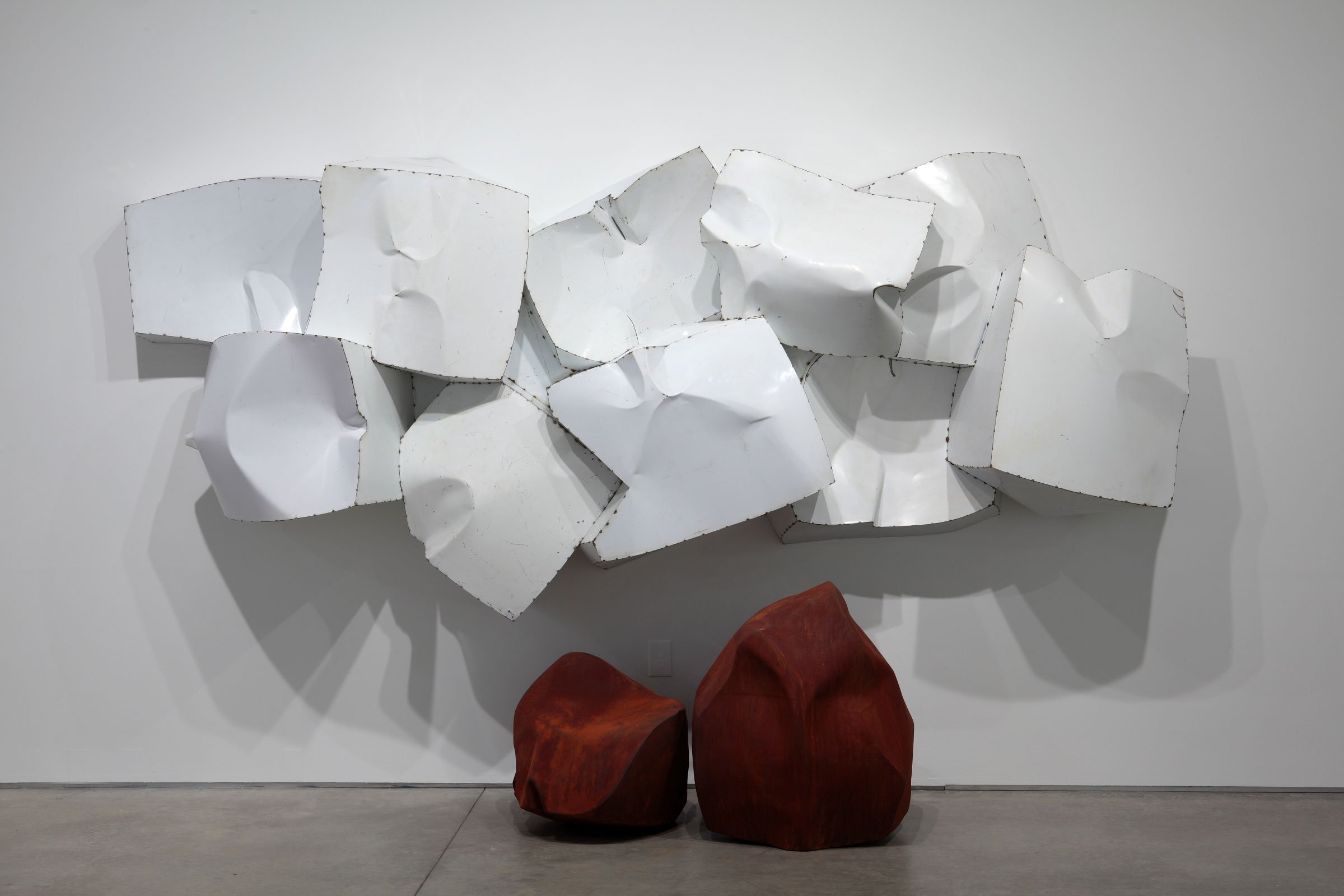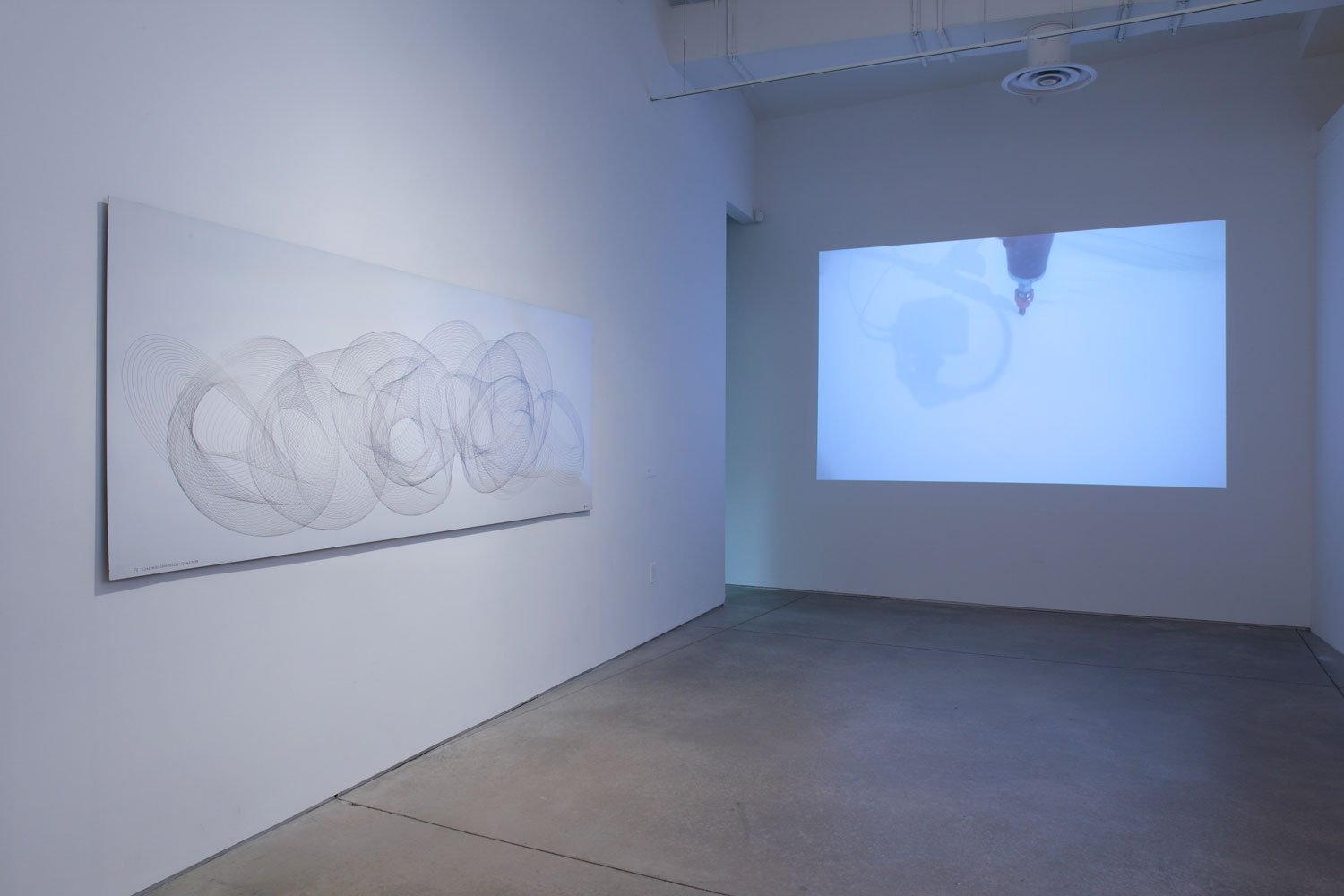Yield, Visual Arts Center of Richmond, VA
In the early 1950s, at Black Mountain College, located just outside Asheville, North Carolina, experimental composer John Cage began using chance operations to create sound compositions. In one of the earliest examples, Water Music (1952) renamed Water Walk (1959) and performed publically in 1960 for the television game show I’ve Got a Secret, Cage set up a series of found everyday objects on a stage: a tea kettle, a radio, a blender, a tub of water, a piano, etc. For the television performance, Cage walked around the stage activating each appliance to make a sound. Eventually, the performance ended in a chaotic cacophony of random noises: whistles, bangs, bubbling sounds, and the audience laughing over the whole absurd situation.¹
Nearly half a century later and working in the same fertile ground of Asheville, Hoss Haley courts chance in a way that follows after Cage but starkly diverges. Unlike Cage, a composer who encountered objects in a strictly conceptual way as materials to be used for their sonic qualities, Haley remains a maker: “My father is a tinkerer and I inherited that from him. For me, it’s integral to the process. I tend to work responsively to the material [and] that’s one reason I build my own machines.”² A sculptor working in bronze, stainless steel, steel, and concrete, Haley uses recycled discarded metal – including washing machines or scrapped cars – literally dug up from the scrap yard to create large-scale installations that generate a dialogue tied to environmentalism and throwaway culture, the value of domestic commodities, American ingenuity, and history. Interested in the process of building and investigating materials, Haley’s work is intimately tied to the artist’s hand. Rather than just letting chance take over, Haley is learning the more nuanced process of yielding.
A multifaceted term, Yield can mean the way in which an object gives way against an outside force or pressure: how metal folds under the force of a hydraulic press, a massive erratic boulder gets carried along by glacial movements, or how economic stability depends on shifting global Gross Domestic Product (GDP). It can be a process of deskilling for the artist, who was originally trained for six years as a blacksmith with a keen eye for craft. Or even a way of giving the audience power, like the newest iteration of The Drawing Machine (2010), a tabletop custom-machine built by Haley that mechanically makes drawings based on the movements of people in the gallery. Finally, yield is a way for Haley to let go of control and allow chance to take over.
This process of yielding is most pronounced in his recent work, but it harkens back to his earliest childhood experiences. Raised on a 2000-acre farm in Dodge City, Kansas, where his family bred cattle and harvested wheat, Haley vividly remembers spending his formative years driving a tractor “over so much nothing. I think because of this early experience, I am naturally attracted to spare forms. They’re minimal but not in the [historical] sense of Minimalism. That landscape is so big and empty that you can see the curve of the earth. I knew I was a dot on a giant field and I would lay on the ground in the field and feel the curve of the earth. That feeling doesn’t go away. I think my ability to pair objects to their essence while being aware of the tiniest detail is born out of that childhood experience.”
– Amanda Dalla Villa Adams
Kenneth Silverman, Begin Again: A Biography of John Cage (Illinois: Northwestern University Press, 2012), 169-170.
All quotations by the artist are from interviews wiath the author in August 2015.







